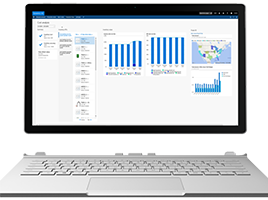You’re always hearing that you need an “integrated” Enterprise Resource Planning (ERP) system, but what does that really mean? Find out what integration is, which functions can be integrated and why it helps your business grow.

What is Integration?
Integrating your ERP system is essentially joining functions within departments to functions of other departments to make your business processes go more smoothly. This is accomplished by using interactive modules that allow specific departments to carry out their own functions while having access to the information they need from other departments to complete those functions.
How Does Integration Help?
At first it might sound like you’re trying to encroach on the different responsibilities of each department, but really, it’s all about increased communication. Your company is a synergistic entity; the departments must all take care of their own functions while still meeting the needs of the entire company. To do that, each department must be able to communicate with other relevant departments or outside entities to get the job done. Integration provides that communication through increased access to information with linked modules. Here are a few examples:
• Accounting departments need access to receipts, travel itineraries and meeting or conference agendas to process travel reimbursements. Integrating with end-user travel reports and data can reduce payout times and increase accuracy.
• Supply chain personnel need to know where supplies are needed, where they are coming from and who is available to deliver. Linking inventory control to logistics can prevent duplication of orders and reduce delivery times.
• Marketing specialists need to know how well their campaigns are performing. Providing access to sales data, customer relationship management and social media stats can offer valuable insights to drive growth.
What Functions Can Be Integrated?
Before ERP solutions, people relied on one-on-one (and often, face-to-face) communication that required time and a concerted effort. But now, access to information through various ERP modules creates a seamless flow of information tailored to both individual- and department-level needs. Let’s look at some of the types of ERP modules and functions that can be integrated into one system:
• Accounting and Financial: audit and controls, cash flow planning, consolidation, statutory reporting, payroll
• Human Resources: training, absence management, time management, travel and expenses
• Supply Chain Management: inventory control, transportation and logistics, routing, warehouse management
• Customer Relationship Management: contact information, social media management, loyalty tracking, dispute resolution
• Project Management: scheduling, meeting management, task management, progress tracking
• Data Services: reports, statistics, information health and accuracy
How Does Integration Help Your Business Grow?
Integrated ERP systems provide increased access to information and communication throughout your organization. With cloud-based solutions, integrated ERP can remove the distance between multiple locations and keep data flowing as if everyone were in the same room. Many cloud-based options also include additional mobility by providing apps for smartphones and tablets so your people can access information on the go.
Integrating functions provide a plethora of other benefits, including:
• Increase in data access and reliability
• Reduction of redundant tasks
• Assessment of real-time data
• Discovery of previously unseen business needs, strengths or weaknesses
If you’ve been wondering how you could take your organization to the next level, an integrated ERP system might be the answer. Give your personnel the access and increased communication they need to perform at optimum levels any time and anywhere with integrated ERP.






